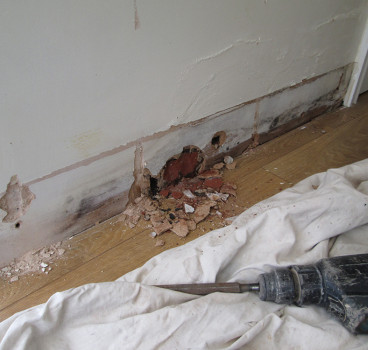Keeping concrete stable - whatever the weather
The mini-heatwave that settled upon many parts of the UK in June provided a welcome reminder that hot, sunny weather wasn't necessarily the preserve of our compatriots across the continent. Sweltering temperatures, however pleasant they might be for camels or ice cream vendors, do not make ideal building conditions, particularly when it comes to concreting.
For concrete to be placed and finished correctly, it needs to remain workable. In hot weather, moisture is drawn from the mixture more quickly, which can lead to it setting too rapidly for the user's requirements. For instance, a 300mm-thick slab requires two loads of concrete to fill a mould.
Timings are tight, and it's not unknown for the first load to set before the second load is even delivered – particularly during hot weather. It only takes the second delivery load to be delayed by traffic, for example, for the process to fail. Fresh cement that's poured onto an already-set and compacted base can lead to cold joints and unevenness.
Fresh loads of cement should knit together to form one homogenous mass. For this to happen – concrete generates its own heat, so climatic conditions are only part of the hydration issue – it helps if the setting process is decelerated. Here's where the availability of a product range such as Sikatard is such a huge benefit.
Sikatard is an admixture in liquid form developed for the control of cement hydration. It coats the cement particles to prevent infusion and slow the drying-out process. This ensures the concrete mix is stabilised and prevents its setting for hours or even days. Sikatard, which conforms to the requirements of BS EN 934-2 Table 8, can also be used in steel reinforced concrete construction without restriction. Its stabilising properties ensure the distribution of stresses throughout the reinforcement encapsulated in the concrete isn't compromised.
Sika PilePak is another product proven to eliminate moisture escape from concrete. Its use during cast in situ concrete piling projects eases steel reinforcement fitting. Sika PilePak acts as a thickening agent which helps retain moisture within the concrete's cement paste. It's added to the concrete during batching then delivered to site.
Dry or gravel-based ground absorbs water from cement like a sponge, making steel reinforcement insertion incredibly difficult, which could affect the concrete, and ultimately, the infrastructure's stability. Sika PilePak ensures consistency and workability of the concrete over a prolonged period of time, helping avoid any concrete problems at any one pile position.
With the government announcing a total of 250,000 new homes are needed annually to keep pace with demand, speed is key to developers helping fulfil this requirement without compromise to safety or quality. Thankfully, in Sika PilePak and the Sikatard range, the industry has the products with which to build a stable base to help meet our future housing needs – however hot the weather.
By John Eustace, Product Manager at Sika
Additional Blogs

How construction can cut Its carbon footprint by caring for soil
Soil is often dismissed as mere dirt, but it is one of the planet’s most powerful carbon stores, holding more than all of the world’s forests combined. Yet in our rush to build, pave and develop, we...
Read moreWhat is bridging damp? How it happens and how to fix it
Bridging damp happens when moisture finds a path around the building’s damp-proof course (DPC) so it reaches your internal walls and skirting. If you see damp patches rising above the skirting or...
Read more

The silent death of the fixed-price contract
For decades, the fixed-price contract has been the backbone of construction procurement. It promised certainty with a defined scope, an agreed sum and a clear transfer of risk from client to...
Read more